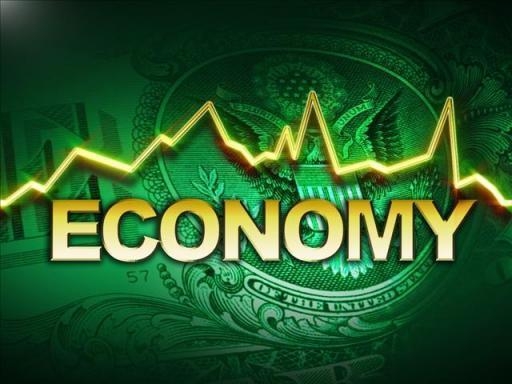Economy

Durable Goods Orders Plummet for Second Month
Written by Sandy Williams
May 28, 2020
Covid-19 restrictions kept consumers and businesses from buying big ticket items last month, causing manufactured durable goods orders to plummet 17.2 percent in April. The new data from the Commerce Department follows a 16.6 percent decline in orders during March.
Transportation orders, always a volatile data point, plunged 47.3 percent in April. The auto industry felt more pain in April, with orders falling 52.8 percent for vehicles and auto parts. Excluding transportation, new orders were down 7.4 percent
Core capital goods, nondefense goods excluding aircraft and a proxy for future business investment, fell 5.8 percent, following a revised dip in March of 1.1 percent.
Today’s report followed a 5.0 percent slide in GDP and 2.12 million more unemployment filings for the week ending May 23.
The April advance report on durable goods manufacturers’ shipments, inventories and orders follows:
New Orders
New orders for manufactured durable goods in April decreased $35.4 billion or 17.2 percent to $170.0 billion. This decrease, down three of the last four months, followed a 16.6 percent March decrease. Excluding transportation, new orders decreased 7.4 percent. Excluding defense, new orders decreased 16.2 percent. Transportation equipment, also down three of the last four months, led the decrease by $23.9 billion or 47.3 percent to $26.6 billion.
Shipments
Shipments of manufactured durable goods in April, down three of the last four months, decreased $41.5 billion or 17.7 percent to $192.3 billion. This followed a 5.5 percent March decrease. Transportation equipment, also down three of the last four months, led the decrease by $31.4 billion or 42.7 percent to $42.1 billion.
Unfilled Orders
Unfilled orders for manufactured durable goods in April, down two consecutive months, decreased $17.5 billion or 1.6 percent to $1,107.8 billion. This followed a 2.1 percent March decrease. Transportation equipment, also down two consecutive months, led the decrease by $15.5 billion or 2.0 percent to $759.9 billion.
Inventories
Inventories of manufactured durable goods in April, up two consecutive months, increased $0.7 billion or 0.2 percent to $425.6 billion. This followed a 0.6 percent March increase. Transportation equipment, up 21 of the last 22 months, led the increase by $0.4 billion or 0.3 percent to $143.0 billion.
Capital Goods
Nondefense new orders for capital goods in April increased $3.8 billion or 8.2 percent to $50.1 billion. Shipments decreased $9.2 billion or 12.6 percent to $63.8 billion. Unfilled orders decreased $13.7 billion or 2.2 percent to $624.8 billion. Inventories increased $0.2 billion or 0.1 percent to $190.3 billion.
Defense new orders for capital goods in April decreased $4.9 billion or 30.8 percent to $11.0 billion. Shipments increased $0.5 billion or 3.9 percent to $12.5 billion. Unfilled orders decreased $1.5 billion or 0.8 percent to $178.9 billion. Inventories increased $0.3 billion or 1.4 percent to $21.1 billion.
Revised and Recently Benchmarked March Data
Revised seasonally adjusted March figures for all manufacturing industries were: new orders, $441.6 billion (revised from $445.0 billion); shipments, $470.1 billion (revised from $472.2 billion); unfilled orders, $1,125.3 billion (revised from $1,126.5 billion) and total inventories, $690.0 billion (revised from $690.6 billion).

Sandy Williams
Read more from Sandy WilliamsLatest in Economy

Steel, manufacturing, and union groups divided on S232 tariffs
Domestic steel trade associations, manufacturing groups, and the United Steelworkers (USW) union had mixed reactions to the implementation of new Section 232 tariffs without exclusions on Wednesday. Trade groups representing steel mills broadly supported President Trump’s actions, while the USW and some groups representing manufacturers were more critical. AISI Kevin Dempsey, president and CEO of […]

CRU: Will US tariff policy be transactional or transformational?
The Trump 1.0 tariffs appeared to have little positive effect on the US manufacturing, partly because they hurt export competitiveness.

Beige Book finds mixed demand trends, tariff concerns
Manufacturing activity exhibited slight to modest increases across a majority of districts. However, manufacturers expressed concerns over the potential impact of looming trade policy changes between late January and February.

Construction spending drops marginally in January
Construction spending edged down slightly in January, slipping for the first time in four months. The US Census Bureau estimated spending at a seasonally adjusted annual rate of $2,196 billion in January, down 0.2% from December’s downward revised rate. The January figure is 3.3% higher than a year ago. January’s result, despite the slight erosion, […]

ISM: Manufacturing expansion slowed in February
The Manufacturing PMI registered 50.3% in February. That’s 0.6 percentage points lower compared to the 50.9% recorded in January.
